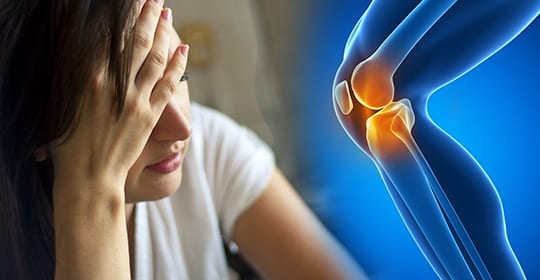MENOPAUSE AND OSTEOPOROSIS – ALL YOU NEED TO KNOW
Osteoporosis is a disease that weakens your bones, increasing the risk of sudden and unexpected fractures.
Generally, bone density (bone mass) decreases after 35 years of age, and bone loss occurs at a rapid pace in women after menopause. Unfortunately, osteoporosis is not detected until weakened bones start causing painful fractures or bone breakage, often in the back or hips, causing chronic back pain. And, once you have an osteoporotic fracture, you are at high risk of having another and they can be incapacitating.
What are the causes of osteoporosis?
Even though there are lesser known causes of osteoporosis, we know how the disease develops. Your bones are made of growing, living tissues and an outer shell of dense bone wraps trabecular bone – a sponge-like bone. When a bone is weakened by osteoporosis, the ‘holes’ in the ‘sponge’ grow larger and numerous, weakening the inside of the bone.
How does osteoporosis is related to menopause?
Do you know that there is a direct link between the lack of estrogen after menopause and the development of osteoporosis? Yes, it’s true – but now you can prevent this condition as several treatments are available now to slow down the bone loss that results in osteoporosis.
After menopause, the process of braking down the bones (bone resorption) limits the building of new bone. Factors like no or infrequent menstrual periods, early menopause (before the age 45), and woman has low hormone levels can cause loss of bone mass, resulting in osteoporosis.
What are the symptoms of osteoporosis?
Often called a ‘silent disease,’ osteoporosis generally occurs without any symptoms. You may not know that you have osteoporosis until your bones become so weak that a sudden strain, bump, or fall causes a fracture or a vertebra to collapse.
Once your bones are weakened by osteoporosis, you may have the below-mentioned signs and symptoms:
- Back pain, caused by a fractured or collapsed vertebra
- Loss of height over time
- A stooped posture
- A bone fracture that occurs much more easily than expected
What are the unchangeable risk factors of osteoporosis?
Some risk factor for osteoporosis is out of our control, such as:
- Age: After the age of 30 when you reach maximum bone density and strength, bone mass begins to reduce. The older you get, the greater your risks for osteoporosis will be.
- Gender: Women are at an increased risk of developing osteoporosis than men.
- Size of the body frame: Those who have small body frames tend to have a higher risk of developing osteoporosis because they may have less bone mass to draw from as they age.
- Family history: Heredity is one of the most important risk factors for osteoporosis. If your parents or grandparents have had any signs of osteoporosis, such as a fractured hip after a minor fall, you may be at higher risk of developing the disease.
How is osteoporosis treated?
Treatment for this disease may include:
- Weight-bearing exercises to make your muscles work against gravity
- Calcium and vitamin D supplements
- Prescription of medications
How to prevent osteoporosis?
Below-mentioned are some of the many ways to prevent osteoporosis:
- Do regular exercise – it helps make bones and muscles stronger, preventing bone loss.
- Follow a healthy, nutritious diet high in calcium – it helps build and keep strong bones.
- Be out in the sun for around 20 minutes every day – it helps your body make enough vitamin D and your body can use vitamin D to absorb calcium.
- Avoid specific medications such as steroids, certain drugs used to treat seizures (anticonvulsants), blood thinners (anticoagulants), and thyroid medications – it helps prevent osteoporosis as these medications may increase the rate of bone loss if not used as directed.
- Avoid the use of alcohol and tobacco products – Alcohol can damage your bones, increasing your risk of falling and breaking the bones. Smoking causes your body to make less estrogen, which protects the bones.
And, if you have osteoporosis, it is crucial to protect yourself against accidental falls, which may cause fractures. You can follow the following precautions to make yourself safe:
- Discard loose household items to keep your home free of clutter
- Install grab bars on tubs, shower walls and next to toilets
- Ensure proper lighting, including nightlights for bathroom visits in the night
- Remove throw rugs and put treads on floors
If you have or are at higher risk for osteoporosis, consult your doctor to know more about your options to preserve your bone health and treat or prevent the disease. Depending on any other risk factors you may have, you and your doctor can decide on the safest course of action where osteoporosis is concerned.






